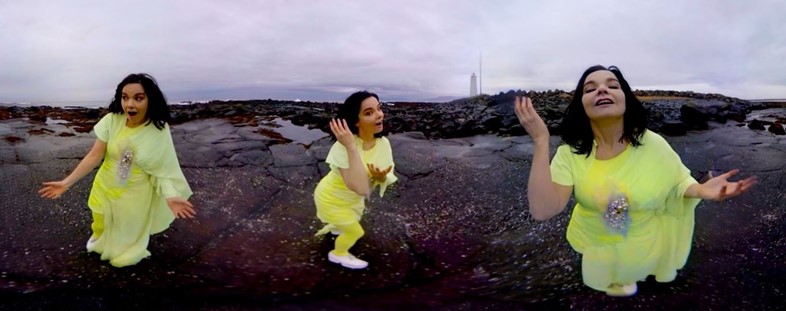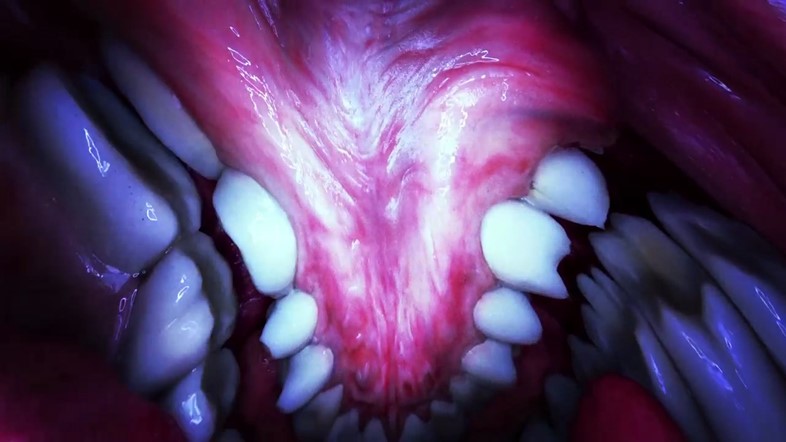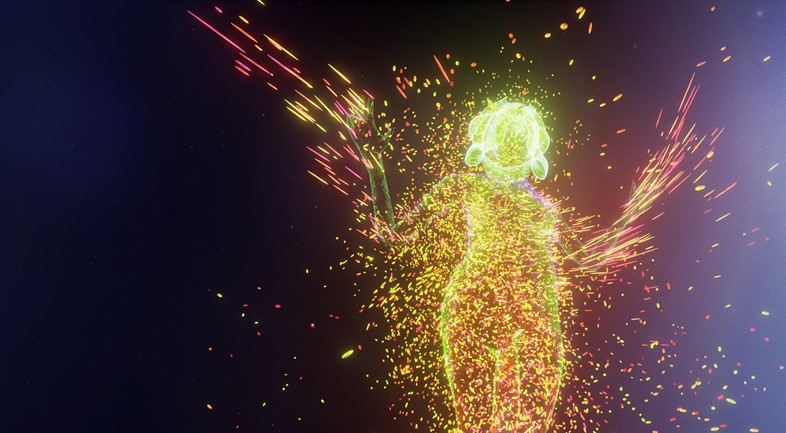The Icelandic icon discusses her pioneering virtual reality show, now on display at London's Somerset House
Björk has long considered technology to be “an enabler” – a “liberating science” which allows her to realise her extraordinary soundscapes in unprecedented new ways. She spoke about this with great candour at the press preview of her innovative new virtual reality exhibition, Björk Digital, where she appeared (rather appropriately) on a large, flesh-coloured screen as a virtual avatar – composed of shiny ergonomic limbs and soft, impish features that are remarkably akin to her own.
Notably, the Icelandic artist’s artificial self contained a open red wound at its chest, alluding to the heartbreak that informed her latest album, Vulnicura (2015), and is expressed openly throughout the show in remarkable digital and video works. “I blush, I’m almost embarrassed because of the drama [in Vulnicura] but heartbreak is the oldest story of all, and I hope people are understanding of that,” she explained of her recent separation with long-term partner, artist Matthew Barney. “I think the digital experimentation [of the songs] suits the project well. I used directors with different points of view using various technologies; there is craft and emotion. This is my gut feeling.” Below, we unravel the three pivotal themes of the exhibition.

Mother Earth
Björk’s native Iceland provides a recurring visual narrative throughout the exhibition, transporting viewers to some of the country’s most beautiful and peripheral landscapes through the futuristic advances of virtual reality and panoramic film. Though man and machine are often considered to be opposing entities, in Björk’s musical universe they appear harmonious.
Take the show’s opening display, Black Lake, for example – a highly evocative short film that Björk conceived with director Anders Thomas Huang (originally commissioned by The Museum of Modern Art, New York in 2015 for its largely criticised Björk retrospective) – which sees the songstress “run around bare foot in the lava” of a large black cave. The 11-minute-long footage is split across dual panoramic screens, plunging viewers into a cathartic musical episode in which Björk dances wildly – grabbing the earth, pushing against rocky crevices – exorcising her emotional demons before rising like a phoenix into the night sky clad in a diaphanous gold gown. While in Stonemilker, an extraordinary 360-degree video, experienced through a personal VR headset, Björk appears on a remote windswept beach off the coast of Iceland, complete with a lighthouse. “I wish to synchronise our feelings, our feelings,” she chants with fervour, circling the viewer and delivering an unforgettable performance, just for one.

Inside Out
The show’s immersive engagement reaches a climactic peak in Mouthmantra – a gripping VR work by progressive director Jesse Kanda. Shot from the inside of Björk’s mouth – stringy saliva, bulbous molars and all – while she’s singing the title track, it’s a gritty and startlingly visceral experience that takes us physically closer to the songstress that many would have thought humanly possible. She is baring her soul, and we are entering her psyche, devouring her expressions in the process. “When I make music, it’s my world,” she adds. “But with the visuals, it’s more of a collaboration – I sit down with the directors and explain the nature of the song, the colours and they tend to take that away and write their own treatment. Jesse [Kanda] is a magical person I came to know through Arca, and after a lot of night dancing and having fun, he came up with the mouth concept,” she adds.

A Utopian Future
While much of the material from Björk Digital stems from desolation – or, as the songstress so tactfully explained, “the realisation of being alone and feeling isolated,” there is also pervading sense of triumph throughout, a positivity that comes from having endured adversity. “I think it’s important to be determined about the light, to be intentional about it,” said Björk. “There is a little more chance if people focus on the light.” Her Biophilia project, a pioneering musical and environmental education app (a digital extension to her 2011 album of the same name), which is positioned on compact tablets in the final room of the exhibit, is testament to that. “Biophilia has been used to teach middle school children across all of the Scandinavian countries for two or three years now,” she revealed. “It has become a valid teaching method for underprivileged schools who don’t have the right tools for the students to study music.” As if that wasn’t enough, she brightly concluded: “We’re now making Biophilia two. It’ll probably become a permanent place, a house somewhere in Iceland with all the instruments that we built especially for it.”
Björk Digital runs at London’s Somerset House until October 23, 2016.
